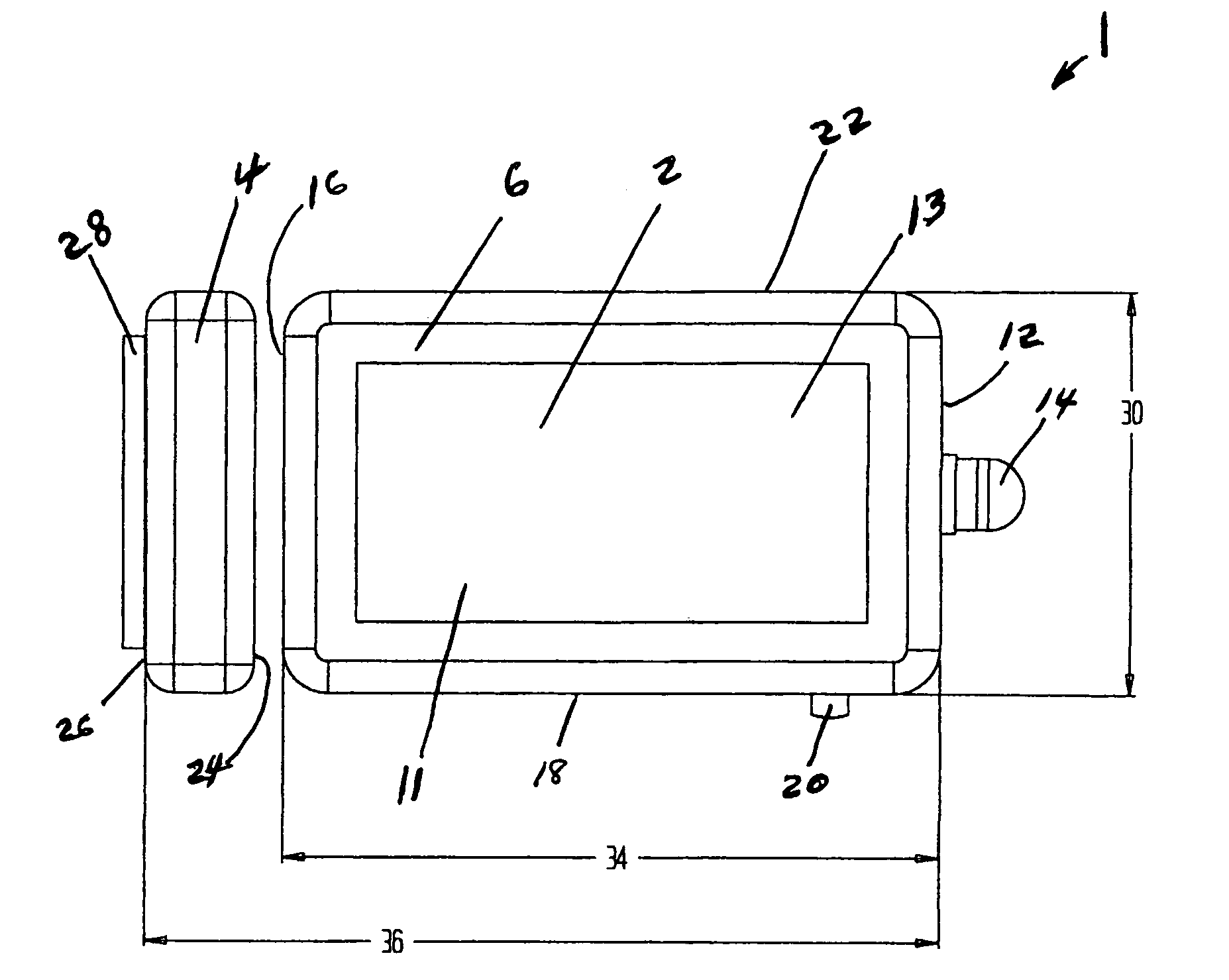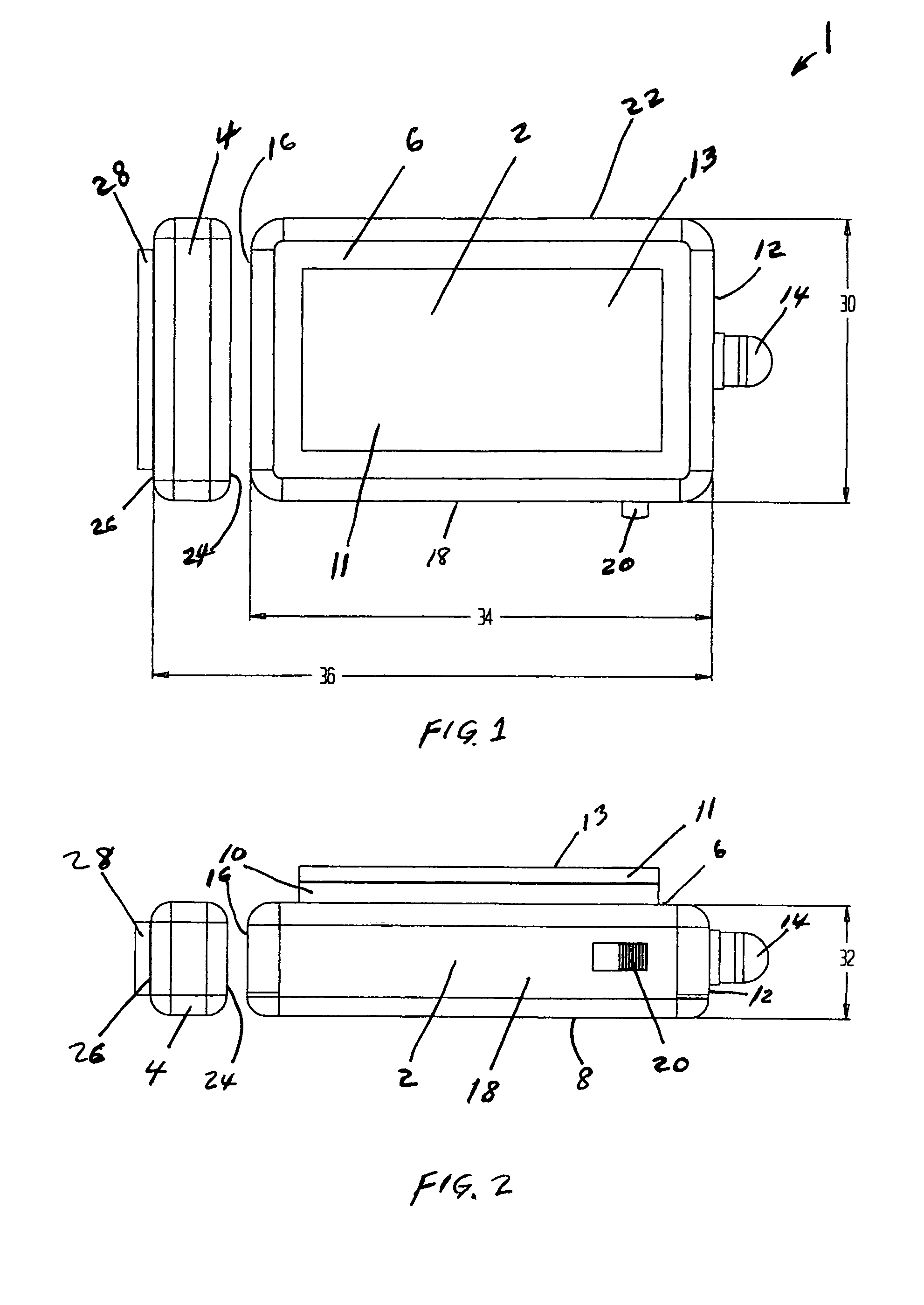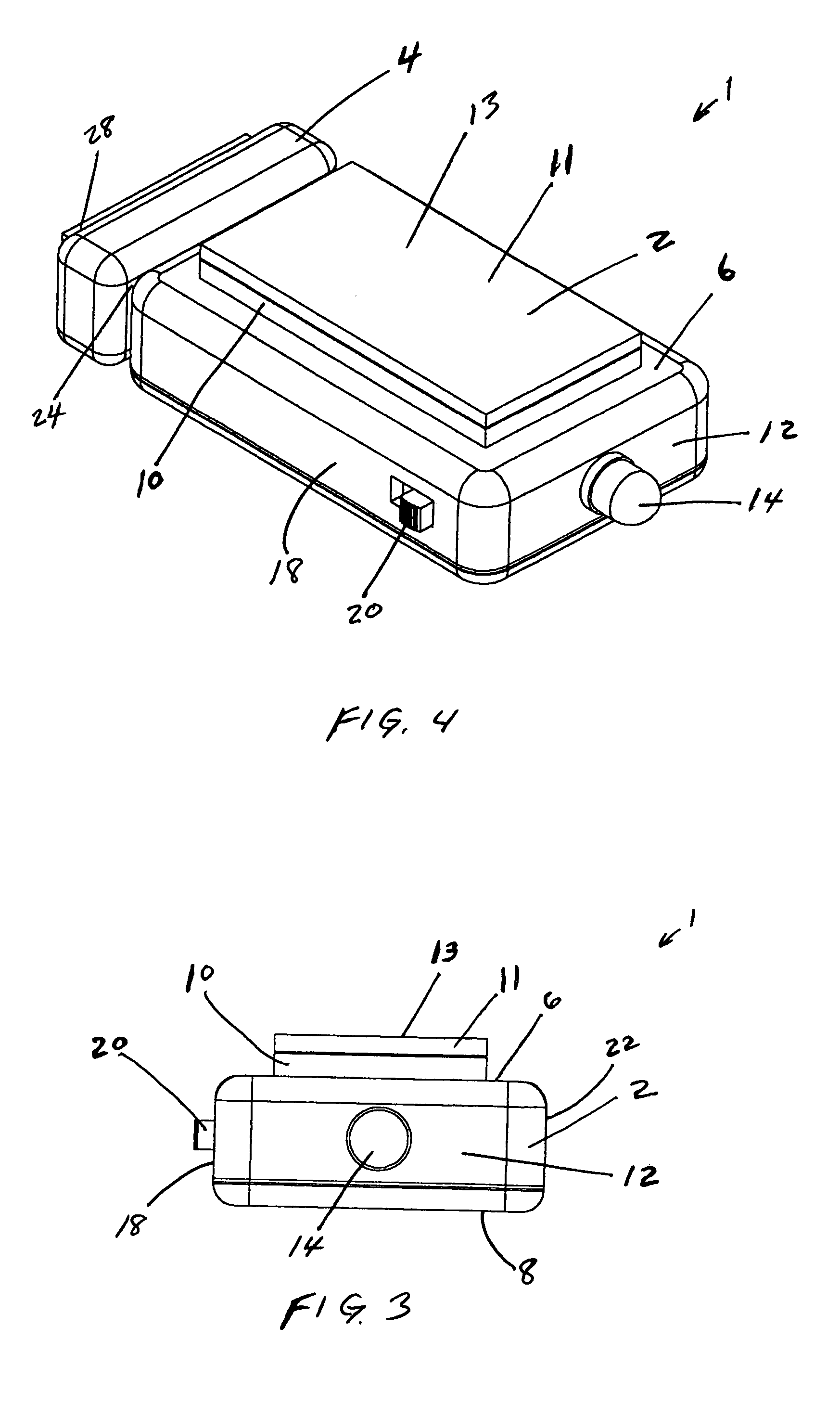Lighting system for enclosures
a technology of enclosures and light sources, applied in the direction of lighting and heating apparatus, semiconductor devices for light sources, lighting support devices, etc., can solve the problems of incandescent lamps still generating significant heat, high current devices giving a harsh light dramatically different, and requiring heavy connective wiring, etc., to achieve intense light, long service life, and small size
- Summary
- Abstract
- Description
- Claims
- Application Information
AI Technical Summary
Benefits of technology
Problems solved by technology
Method used
Image
Examples
Embodiment Construction
[0047]Referring to the Figures, as seen in FIGS. 1 through 4 showing a lighting system formed in accordance with the principles of this invention, enclosure light 1 has a body 2 and an associated magnetic piece 4. Magnetic piece 4 is composed of a magnet surrounded by a suitable polymeric material. Body 2 has a top surface 6 and a bottom surface 8, surface 6 having attached thereto hook fastener material 10. Body 2 also has a first end surface 12 from which protrudes LED 14, a second end surface 16, a first lateral surface 18 from which protrudes the slide portion of switch 20, and a second lateral surface 22. Magnetic piece 4 has first end surface 24 and a second end surface 26, surface 26 having affixed thereto adhesive strip 28. Loop material 11 is removably affixed to hook material 10, top surface 13 of material 11 is coated with an adhesive material. The disclosed device is compact, width 30 being about 1.1 inches, height 32 being about 0.45 inches, body length 34 being about 1...
PUM
 Login to View More
Login to View More Abstract
Description
Claims
Application Information
 Login to View More
Login to View More - R&D
- Intellectual Property
- Life Sciences
- Materials
- Tech Scout
- Unparalleled Data Quality
- Higher Quality Content
- 60% Fewer Hallucinations
Browse by: Latest US Patents, China's latest patents, Technical Efficacy Thesaurus, Application Domain, Technology Topic, Popular Technical Reports.
© 2025 PatSnap. All rights reserved.Legal|Privacy policy|Modern Slavery Act Transparency Statement|Sitemap|About US| Contact US: help@patsnap.com



